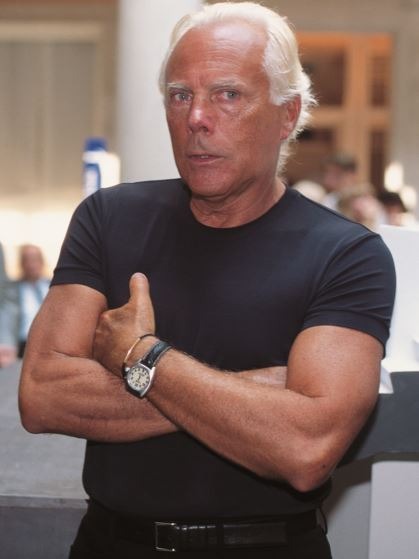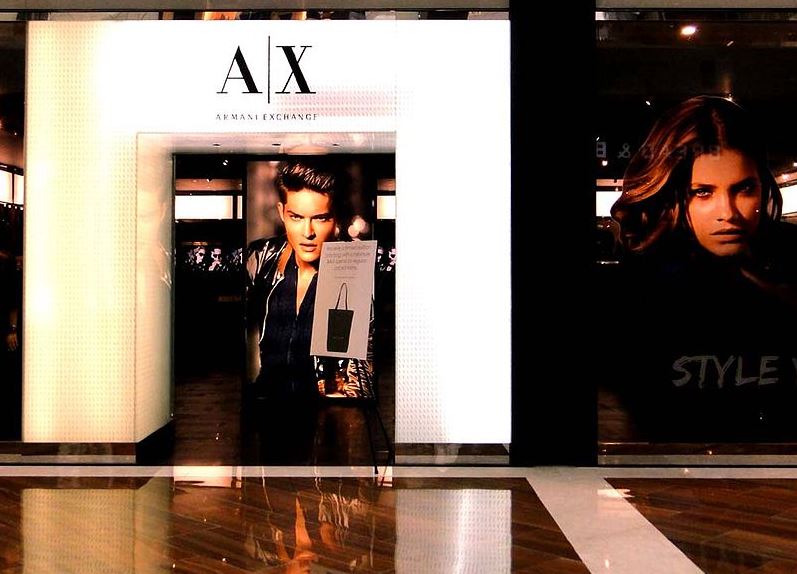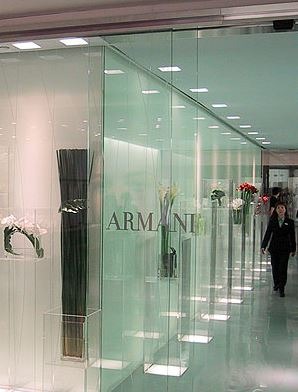Giorgio Armani is a well-known Italian fashion designer of his time. He is most known for his menswear. On the other hand, his designs remain respected today for their clean and fitted lines.
An Italian founded Armani in 1975. Giorgio Armani was eventually recognized as the most successful Italian fashion designer, with a personal wealth estimated to be worth $5 billion.
The Giorgio Armani brand, owned and maintained by the founding designer Giorgio Armani, has acquired a prestigious place in the fashion business due to its timely themes, exceptional design, and trends. It retains the aura of a genuine luxury brand. Giorgio Armani is not only one of the most renowned and well-known brand names in the fashion and luxury brand industries, but it is also one of the world’s most valuable fashion enterprises.
Armani is known for its sleek, unstructured appearance. In addition to garments and apparel, the company licenses its name for accessories, watches, and fragrances. On the other hand, clothing is the top product and accounts for the majority of the company’s revenues.
In this post, we’ll take a closer look at the brand’s history and products. So, continue reading for the ultimate guide to Giorgio Armani.
History
Armani was born in the northern Italian town of Piacenza in 1934 and later attended Piacenza University for two years and left for military service. While on vacation from the military, Armani worked as a window dresser at the Milan department store, La Rinascente, eventually rising to buyer’s position, marking his first step into the fashion industry.
Armani began his career as a designer at Nino Cerruti in 1965, when he met Sergio Galeotti. Giorgio Armani founded the company with Galeotti in 1975.
As a designer, Armani created clothing with his sense of beauty, aesthetics, and luxury, which appealed to the society’s elite. It is a privately held firm, with Giorgio Armani as the only shareholder. It has become one of the world’s most emphatic fashion and luxury brands, with various sub-brands designed under the leading umbrella brand of Giorgio Armani to cater to the specialized needs of different market sectors.
Quality, class, and exclusivity are the three pillars upon which the brand is established. Its product categories include garments, accessories, swimwear, eyewear, perfume, watches, cosmetics, bags, and shoes for women, men, and children.
With its numerous future development markets for luxury companies, Giorgio Armani is highly expansive in the Asia Pacific. For example, China is increasingly adopting premium luxury products and fashion, and Giorgio Armani has been among the forerunners in capitalizing on the market potential. Between 2015-2018, Chinese luxury brand consumers’ domestic purchasing produced twice as much absolute value increase as their international expenditure.
According to a 2018 report by Bain, a global management firm, Chinese consumers contribute 33% of the USD 1.4 trillion global luxury industry. Giorgio Armani inaugurated its Emporio Armani boutique near Shanghai’s historic “The Bund” in 2004 and has subsequently expanded throughout China.
In contrast to the standard branding strategies used in the consumer goods business, the branding philosophy in the luxury goods and fashion industries is highly personality-based and unique. Most notable fashion houses, such as Christian Dior, the House of Gucci, Yves Saint-Laurent, Versace, and many more, were founded on the founders’ personalities.
Because design is the most significant component of luxury clothes and fashion, the individual style of such designers is critical to developing and maintaining the fashion brand strategy. The unique patterns and designs that represent the personality of their creator give the brand identity and assist it to stand out from the crowd.
The Giorgio Armani fashion house, like many others, was founded primarily on Giorgio Armani’s character and personality. Through the designs made, the brand takes on the founder’s identity.
Though this part of the fashion industry gives fashion companies a strong sense of difference that can be represented visually and physically, it also offers a severe threat. When a whole brand and fashion house are based on the identity and personality of the founder, it becomes a serious difficulty to keep the brand running after the founder’s death, as several fashion houses have recently experienced.
Style and Individuality
View this post on Instagram
A common thread runs across Armani’s aesthetic growth that is directly related to societal change. It resulted in the development of clothing and accessories targeted towards a basic, clean style that went beyond fashion and was intended to accentuate the person’s personality.
His celebrity was officially recognized in 1982, when he appeared on the cover of Time magazine, becoming only the second designer, after Christian Dior, to do so. Armani has liberated ladies from rigid clothes by delivering soft jackets without collars and comfy pants. Although first harsh, as if designed to help women advance in their careers, these costumes tremendously strengthened a form of femininity that was ultimately more genuine because it was not flashy.
The hunt for materials has always been one of the distinguishing features of Armani’s women’s and men’s collections, becoming a prominent design element in 1986, along with embroidery and the comeback to evening dress that he pioneered. The look was unique and precious but always in a minimalist key, deconstructed by the usage of sneakers or low-heeled shoes.
Armani’s clothes have never been a trite concept jumble because he is a keen observer of Eastern influences and prior cultures. Throughout his career, he has consistently succeeded in converting elegant, decorative patterns into a distinct but approachable style and presenting new visions of how men and women dress.
The Brand Architecture of Giorgio Armani
View this post on Instagram
When a brand achieves acceptability and popularity among its target customers in its core business, the next logical step is for the brand to chart a new course by expanding into different categories, product lines, and even markets. This phenomenon appears to be widespread across industries.
With its iconic fame among the society’s elite and the fashion-savvy portion of the market, Giorgio Armani has taken similar steps by expanding the brand. Today, the Armani brand architecture consists of one corporate brand and three sub-brands, each serving a particular set of target clients and at varying price points.
Giorgio Armani’s Signature Line
This is the significant range of very high-quality classic attire, including Oscar dresses, iconic Armani suits, and so on, at ultra-premium price points and mainly aimed at people aged 35 to 50.
Emporio Armani
The Emporio Armani brand, which is aimed primarily at the young professional segment aged 25 to 35, offers contemporary and fashionable designs relevant to the target clients.
EA7
The EA7 line was prompted by Ukrainian footballer Andriy Shevchenko, who wore the number 7 shirt for A.C. Milan at the time. It was designed for anyone who appreciates excellent aesthetics and wants to get the most out of their sporting experience. This apparel line caters to various activities such as running, golf, fitness, and winter sports.
A/X Armani Exchange
This is the licensed trademark of the Armani fashion house’s retail chain and is the ultimate testament to the brand’s power.
Armani Exchange gives customers the whole experience of Giorgio Armani’s luxury fashion by offering the entire spectrum of its accessories and garments. A/X Armani Exchange provides high-quality casual clothes precisely what the general market desires.
Giorgio Armani can engage in several categories of the fashion apparel market because of the corporate brand and sub-brands. However, this is not the end of the story. Armani straddles various segments of the same product category and many other product categories.
Giorgio Armani has expanded into other related sectors, including watches, eyewear, and cosmetics, by leveraging its considerable brand value in the fashion apparel market. These are made available in each brand, as mentioned earlier, to guarantee that they are accessible to the various market segments.
It is commonly argued that because eyewear, watches, fragrances, and cosmetics are closely associated with luxury and fashion, it is natural for fashion houses to expand their names into these areas. Giorgio Armani is a prime example of this point. Armani has created winning concepts in the other product categories of cosmetics, jewelry, watches, underwear, eyeglasses, and loungewear by using its expert knowledge of the luxury and fashion industries.
Armani, however, has not limited himself to fashion as a product area. Armani has expanded the brand into a variety of other areas, including:
Armani Casa (Home Collection)
This brand exemplifies Giorgio Armani’s ideal for life, his fantasy of the ideal environment: a comfortable and personal setting to unwind, rest, and entertain. It provides high-end furniture, fabrics, home accessories, and decorative artifacts, as well as interior design services for a wide range of places, including planes, yachts, and villas.
The Giorgio Armani parent brand completed a premium residential project in Beijing, China, called Smart Hero-Central Park Plaza Residences, collaborating with Smart Hero Group in 2017. The development includes residences, a 5A office building, underground malls, a shopping street, and support services. Armani Casa was in charge of the facility’s design and construction.
Armani Beauty (Fragrances and Cosmetics)
This beauty line’s skincare, cosmetics, and fragrances embody the signature Armani finesse. It collaborates with worldwide makeup artists such as Linda Cantello to provide expert knowledge of the beauty industry.
Armani Beauty has also debuted Armani Privé, its latest haute couture fragrance brand that highlights the natural beauty of a single rare component. The Damask Rose, which demands careful extraction processes, is one of the rare elements employed in its scents.
Armani-branded Dolci (Confectionery)
This is Armani’s candy brand, centered on the idea of sophistication in gifting. With its characteristic ‘A’ emblem, it sells pralines, jams, chocolates, honey, bread products, tea, and more. The product line is exclusive and stands out not only for its exceptional quality but also for the sophisticated and rich image of its elegant packaging.
Armani-branded Fiori (Flowers)
Armani/Fiori was founded in 2000 to bring the sophistication and exquisite taste of the Armani style to the world of floral décor and flowers. The retailers feature clean-lined designs and decorative elements in elegant colors. It also provides customized and personalized events and services, with clients being catered to and carefully guided to choose their ideal floral arrangements or décor.
Armani Ristorante and Caffes (Cafes and Restaurants)
Armani’s entry into the food sector is a risky decision, but it has proven to be a success so far. It has opened 16 restaurants/cafés around the world, including 7 in Asia, 1 in America, and 8 in Europe. Its restaurants are meticulously built, in prime locations, and serve only the best cuisine, allowing diners to dine in luxury, reflecting the brand philosophy.
Armani Hotels (Hotels)
Armani entered the hospitality market in 2005 when it signed a contract with Dubai-based property developer Emaar to develop a chain of Armani-branded resorts and hotels. In 2007, it debuted its Armani Residences, a luxurious collection of 144 private residential homes in Burj Dubai, the world’s tallest structure. In 2010, it debuted its Armani Hotel Dubai in the exact location.
Armani Hotel Milano opened in the Manzoni 31 skyscraper in 2011, situated in the heart of the famed Quadrilatero Della Moda. The World Luxury Hotel Awards recognized the Armani Hotel Dubai, the most luxurious hotel globally, in 2016 for its award-winning facilities and welcoming, Italian-style service.
Armani Clubs (Premier Nightclubs)
View this post on Instagram
Armani has also opened renowned nightclubs in Dubai and Milano, distinguished by their perfect design, discreet personality, and subtle elegance.
Armani Silos (Museum)
To commemorate 40 years of his profession, Armani opened Armani Silos in Milan in April 2015 to add to his diverse portfolio of brands. By retaining the building’s distinctive beehive structure and combining uniform and geometric components, the museum is created with Armani’s creative dynamism and design philosophy in mind. The museum features 200 accessories and 400 outfits from Armani’s ready-to-wear collection from 1980 to the present, as well as the designer’s 40-year career.
All of Giorgio Armani’s other product lines embrace his aesthetic philosophy, centered on the characteristic attributes of sophistication, elegance, and comfort.
As is the fashion industry’s tendency, Armani has utilized its brand equity to be present in the majority of these lucrative industries, including garments, perfumes, jewelry, watches, cosmetics, and luxury hotels. Giorgio Armani is a true success story of traditional brand management, appealing to consumers through its entire brand concept and experience rather than just its products.
If you’re shopping at Giorgio Armani, you might stumble upon their fragrances, so here’s an ultimate guide to men’s fragrances that could help.





